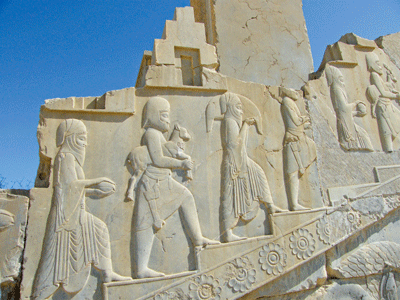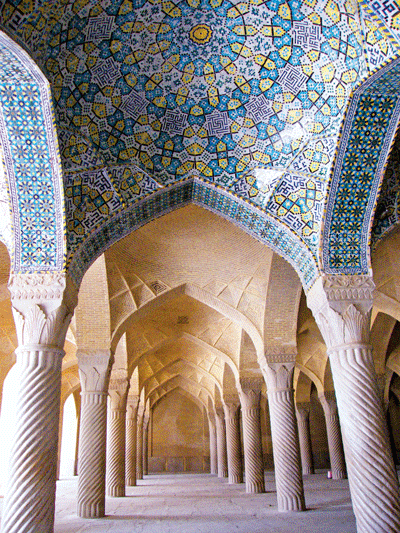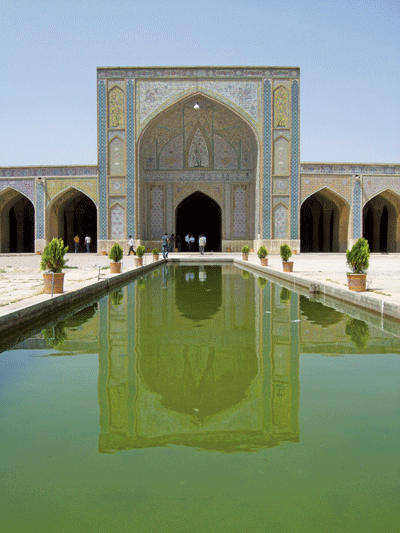Alexander the Great was hard to please. After he had sacked Syria, pillaged the coastal towns of the Levant and advanced through Egypt faster than a dehydrated dromedary, it took something on a greater scale than Gaza to put a smile on his battle-worn brow. And so it was that Alexander marched, with some 10,000 soldiers leading the charge, into Persepolis in southern Iran. Quite rightly, he absolutely loved the place.

As Shiraz’s principal tourist postcard, Persepolis leaves no doubt that its ruins were once the very centre of the known world. Built as a ceremonial palace for the great kings of ancient Persia, it stands on the outskirts of Shiraz as the great gateway to southern Iran. With towering Assyrian bull statues, treasuries and tombs, the mighty Apadana Palace and bas relief marble staircases built by King Darius III, it reigns supreme over Shiraz’s hard fought tourist dollar. Though apparently destroyed by Alexander’s wine glugging drunken troops during a celebratory pre-frat house toga party – as opposed to an act of fiery academic retribution – Persepolis keeps good company with other Unesco World Heritage sites. Despite its neglect, Persepolis remains a true rival to Machu Picchu, Petra and Angkor Wat.

Like Alexander, the Shirazis too are also rather hard to please. As the self-proclaimed centre of cosmopolitan Iranian culture, its sociable locals claim they are the friendliest, most hospitable hosts in the whole country. They also declare their leading role as purveyors of the finest Persian cuisine. Put simply: they don’t like to settle for second best behind Tehran. Indeed, the city boasts more fast food restaurants, affordable hotels, sumptuous kebab buffets – the Sharzeh Traditional Restaurant is an absolute must, famous universities and citrus-tree public gardens than a visitor would expect. It is a rare city of poetic charm and flavour that needs to be wandered and savoured as much as devoured.
The Bazar-e Vakil, Shiraz’s warren of archways, arcades and shopping caravanserais, for example, is as indulgent as any Middle Eastern bazaar. Flaunting Central Asian silks by the donkey cart load, armies of moustachioed traders showcase some of the finest geometric rugs, kilims and carpets ever woven and more than 200 stores dependably trade on spices, exotic handicrafts and kitschy Persepolis ornaments. Serai Mushir, a two-storey caravanserai in the heart of the bazaar, is the perfect maze of lanes in which to wander about and search for a clichéd magical lamp or basket straight from Scheherazade’s One Thousand and One Nights.

But Shiraz’s riches do not stop there: Hafez, Persia’s most famous son and the Shakespeare of the Middle East, was also born within the city’s walls and his poetry remains synonymous with its streets today. His mausoleum, the Aramgah-e Hafez, remains inundated with revering fans as though he was a recently deceased Beatle. The neighbouring Tomb of Sadi, meanwhile, misses out on the crowds but makes up for its lack of celebrity with its tranquil orchard and rose gardens.
And, of course, the fruity bouquet behind Shiraz’s name isn’t just a footnote in the history books either. Once world-famous for its ripe vines of Shiraz grapes, this city no longer offers homemade wine that used to be commonly sold and bought. As no legal wineries exist, visitors have to make do with pots and pots of sweet Iranian tea, or a visit to the Rhone Valley in France, instead.








